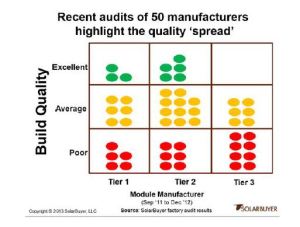Analysis of “Hybrid” Renewable Energy Technology
“SolarMill®” versus “Solar-Only”
I recently spoke with Dan Bates, CEO of Windstream Technologies ,about his company's hybrid small wind solar systems and asked why a hybrid versus straight solar for energy production. After a lengthy discussion with Dan he sent me a 10 point discussion on solar wind hybrids and his Windstream solar mills. It is quite compelling and I am adding his discussion in whole versus summarizing. Enjoy! - Kevin Woodbridge
1. SolarMill® technology has higher energy density – maximizes investment in renewable energy by doing more with less space
Three solar panels with a total maximum capacity of 750 Watts takes up 52 square feet versus the SolarMill “3P”, which in the same 52 square foot space produces a maximum capacity of 1.75 KW.
2. SolarMill® technology maximizes investment with more consistent energy generation
The chart below shows the annual wind and solar resources in the Philippines. Note the divergence between the two during seasonal changes – In the winter months, when solar radiation is waning, the wind resource is increasing. The same can be said for the daily change, as wind picks up daily during temperature change at dusk, overnight, and dawn. In order to maximize an ROI on a renewable energy investment, the greater output and the lower LCOE will prove best.
3. SolarMill® technology has lower LCOE (levelized cost of energy) than solar
The levelized cost of energy is the Total Life Cycle Cost (includes accessories, wiring, etc) divided by the Total Lifetime Energy Production. The chart below, from the Energy Information Administration (USA) shows the relative LCOE across several energy resources.
According to Lazard Freres, the LCOE (unsubsidized), is $149 to $204 per MWh for solar, and $97 to $129 per MWh for microturbines. By using both technologies, SolarMills® have an overall LCOE which is less than solar-only solutions.
4. SolarMill® technology produces more Watts per square foot than solar
The average solar installation produces between 10 and 13 Watts per square foot versus The SolarMill® “3P,” which produces 33 Watts per square foot.
5. SolarMill® is an “integrated” solution maximizing installation investment
As opposed to the standard installation of a solar array, SolarMills® work off of a single set of electronics and a single bus. The overall operational performance of the system is maximized and the costs are minimized.
6. SolarMill® technology saves money by extending battery life
Battery life is dependent on the number of charge cycles and the depth of discharge.Solar charges only during daylight hours. SolarMill® charges 24 hours a day, limiting the “depth” of discharge of the battery. Batteries may last up to 30% longer in a SolarMill® installation reducing the LCOE and the ROI over time.
7. SolarMill® technology has lower service degradation over time (de-rating) than solar
According to homepower.com, the average grid-‐tied, rooftop solar array will lose, or “de-‐rate” by 44% of their generation capacity over its life expectancy. Tier 2 and tier 3 panels have been known to degrade by as much as 60% over their forecasted 25-‐year functional life. Quality is a real issue as shown in the chart below from an audit conducted by SolarBuyer:
SolarMills® use only the highest quality German-made tier 1 panels which are re-‐tested locally before integration into the hybrid system. Further, SolarMills® still only derive a portion of their power from the solar panels. In the 3P model, more than half of the forecasted generation comes from its micro-‐wind turbines, which suffer NO service degradation over time.
8. Lower grade solar panels fail within only a few years, negating any ROI
According to the NY Times in a May 2013 article on the quality of PV Panels, one testing service reported the defect rate of panels inspected in Shanghai jumped from 7.8% to 13% between 2011 and 2012. Another said defect rates ranged from 5.5% to 22% in audits of 50 Chinese factories in the last 18 months. WindStream Technologies’ hybrid system not only integrates the highest quality panels but also its patented US manufactured vertical axis wind turbines.
9. Mandates are now calling for “Hybrid” solutions
According to Indianpowermarket.com, all telecom companies in India are mandated to ensure that at least 50% of all rural towers, and 20% of all urban towers, are powered by Hybrid power by 2015.
10. SolarMill® System Performance is improved with use of micro-inverters
Typical solar arrays are installed with the use of string inverters, wherein a single panel failure will cause a significant if not complete loss of electrical supply from the remaining string.
SolarMills® are configured with micro-‐inverters, wherein a single panel or turbine failure will not impact any other component and overall productivity continues. SolarMill® panels may be oriented individually to maximize performance.
If there are tall buildings or trees near the roof, shading may become an issue. When solar installations use a string inverter, if one or two panels get shaded it can affect the entire string by as much as half of its total performance. With SolarMills®, the micro-‐inverter allows that while the shaded panels may be that affected, the rest of the system keeps performing. See below, from solarenergy.com:






